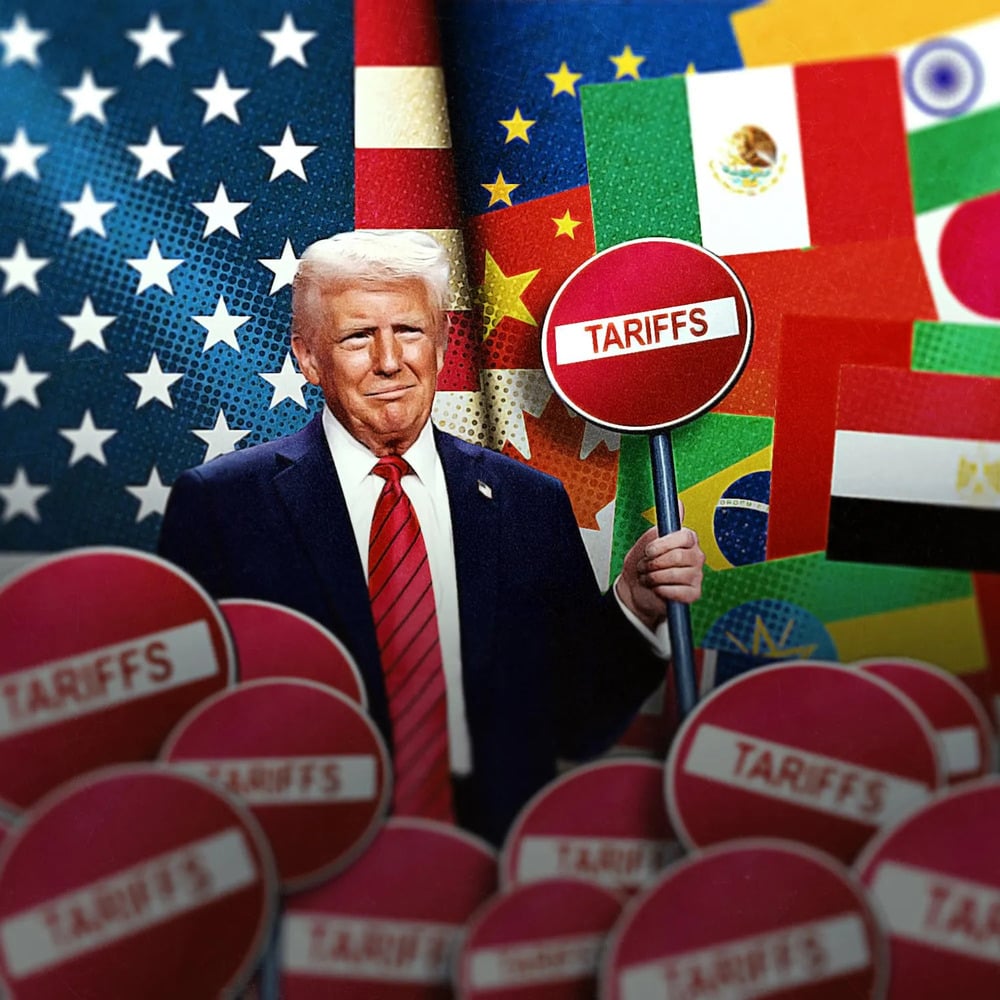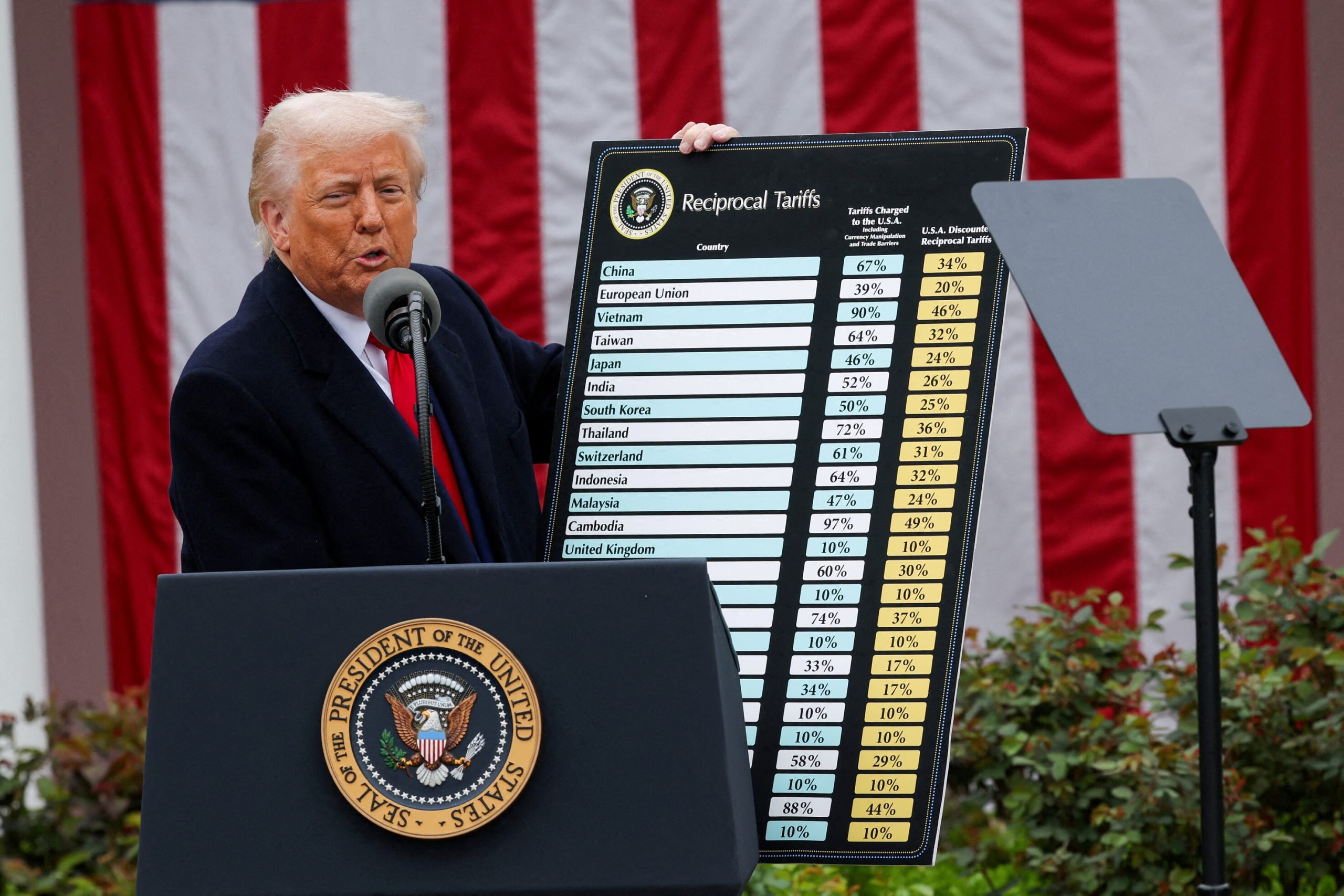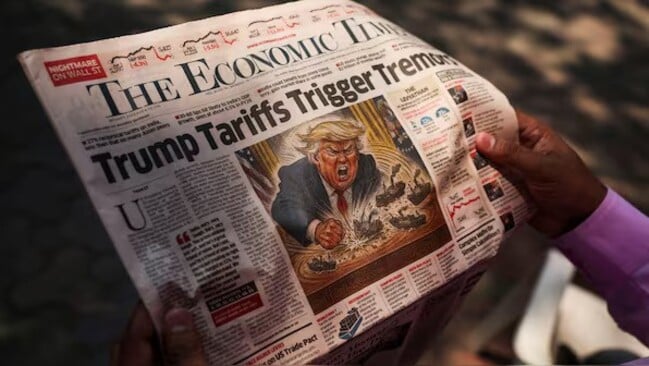
A fashion and pop culture writer who watches a lot…
Understanding the basics of international trade and its consequences is crucial in today’s interconnected world. In recent weeks, the term Trump tariffs, coined after President Donald Trump, has dominated headlines, sparking global debates and economic consequences. Whether you’ve been wondering what tariffs are or trying to decipher the impact of the tariffs Trump implemented, we will give you a clear breakdown of the topic—and how these policies might just tip the global economy into recession.
In this beginner-friendly guide, we’ll explore what tariffs are, why governments use them, and how Trump tariffs have shifted the global economic landscape. We’ll also analyze whether these measures are protecting American jobs or putting the entire global economy at risk. If you’ve ever asked yourself, “What are tariffs?”—or more importantly, “How are Trump’s tariffs affecting me?”—read on.
What Are Tariffs?

Tariffs are essentially taxes imposed by a government on imported goods and services. Think of them as an extra cost added to foreign products entering the country. This tax is typically calculated as a percentage of the product’s value. For example, if a tariff rate is 25% and a product costs $100, the importer pays an additional $25 in tariffs.
Governments impose tariffs for several reasons:
- Revenue Generation: Tariffs serve as a source of income for governments.
- Protection of Domestic Industries: By making imported goods more expensive, tariffs encourage consumers to buy local alternatives.
- Correcting Trade Imbalances: Tariffs can reduce reliance on imports and boost local production.
- Political Leverage: Tariffs can be used as a bargaining tool in international negotiations.
This last point is especially important when we look at Trump’s tariffs. Current U.S. President Donald Trump introduced sweeping tariffs on countries like China, Canada, and Mexico, not just to address trade deficits, but also to pressure these countries into political concessions, including cooperation on immigration and drug control.
How Do Tariffs Affect the Economy That Impose Them?
At first glance, tariffs may seem beneficial to the imposing country. Domestic industries can flourish with reduced competition, potentially leading to increased production and job creation. But this surface-level benefit is often short-lived.
Many domestic industries rely on imported materials to create their products. When tariffs raise the price of those materials, it increases production costs. Businesses then face a choice: absorb the costs and reduce profits, or pass them onto consumers, causing prices to rise. This leads to inflation, reduced consumer spending, and eventually, a slowdown in economic activity.
In the case of the tariffs President Trump introduced, U.S. manufacturers were hit hard. Companies that import parts or raw materials saw their costs spike. If those companies passed the cost to consumers, spending habits will shift, leading to layoffs and decreased business activity. Economist Claudia Sahm warns that the U.S. would struggle to avoid a recession if these Trump tariffs continue to stay in place.
What Happens to the Countries Facing Tariffs?
For the countries on the receiving end, the impact of tariffs can be devastating. When the U.S. imposes tariffs, foreign products become more expensive in American markets. This means lower demand for exports, reduced market share, and potential job losses in export-dependent industries.
Take Canada, for example—exports make up 33% of its GDP, with 20% going to the U.S. A tariff from its largest trading partner significantly dents its economic performance. Countries like Vietnam, Cambodia, and Bangladesh—each hit with Trump tariffs as high as 49%—are facing declining orders from U.S. buyers and shrinking manufacturing output.
To mitigate losses, some nations redirect their exports to other countries. But doing so isn’t easy. It takes time, money, and effort to establish new trade relationships, navigate regulations, and build infrastructure. In the meantime, economic pain persists.
Are Trump’s Tariffs Triggering a Global Recession?
Economists are increasingly sounding the alarm that the Trump tariffs may do more harm than good, not just to the U.S., but globally. J.P. Morgan recently raised its estimate of the global recession risk from 40% to 60%. Why? Tariffs disrupt global supply chains and decrease demand worldwide.
Most products today are built using components from several countries. When demand drops in one part of the world, the ripple effect is felt across the globe—from manufacturing hubs in Asia to service providers in the U.S.
Kristina Fong from the ISEAS-Yusof Ishak Institute explains that when American importers face higher costs, they either absorb the loss or pass it on to consumers. In both cases, companies may resort to downsizing, and consumers may reduce spending. This dual blow—lower business investment and lower consumer spending—is a recipe for recession.
The Bigger Picture: A Reshaped Global Trade Order?

Beyond economics, these tariffs are reshaping geopolitical alliances. Countries that once relied heavily on the U.S. are now diversifying their trade relationships, turning to more stable partners like China. According to Jayant Menon, a fellow at ISEAS, these shifts could redefine global power balances in the long run.
In short, the tariffs Trump hoped would revive American manufacturing might instead be sparking inflation, disrupting supply chains, damaging alliances, and potentially triggering a global economic downturn akin to the 2008 financial crisis.
Whether you’re a student trying to understand what tariffs are, a business owner worried about global trade, or simply someone tracking economic news, one thing is clear: these tariffs are a high-stakes gamble with the global economy.
Featured image: Daybreak/Getty Images
For the latest in fashion, lifestyle, and culture, follow us on Instagram @StyleRave_
—Read Also
A fashion and pop culture writer who watches a lot of TV in his spare time. At Style Rave, we aim to inspire our readers by providing engaging content to not just entertain but to inform and empower you as you ASPIRE to become more stylish, live smarter and be healthier. Follow us on Instagram @StyleRave_ ♥


